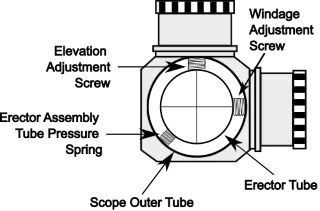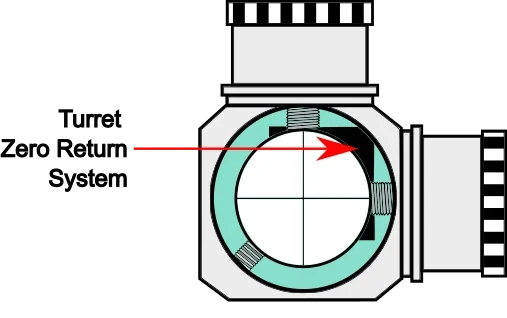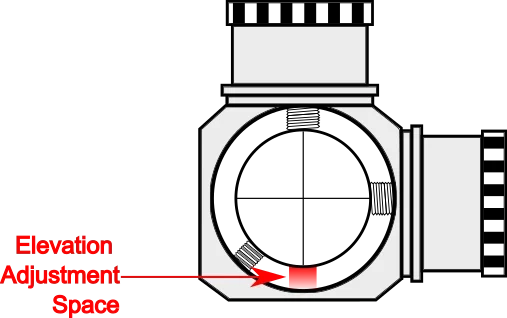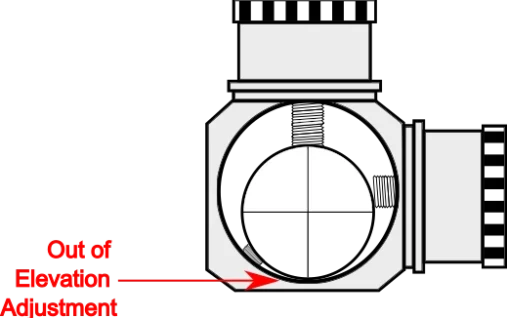

Erector Tube Assembly
Erector Tube Assembly is a key modern riflescope component. The device not only erects the image for the shooter but also facilitates elevation, windage and magnification adjustments.
Table of Contents
Erector tube assembly and why it is such a key riflescope component. Scopes have an outer tube, (Luke covers that in his article on Tube Diameter), that comes in various diameters. Most common is the 1 inch (25.4mm) such as The Vortex Diamondback 3-9×40 and the 30mm. With long-range hunters and the rising popularity of long-distance target range sports such as Precision Rifle Shooting, the 34mm like the Vortex Venom 5-25×56 and even 40mm scope tubes are entering the market in increasing numbers.
Why does outer tube diameter matter? Basically to make room for the fiddley bits of a scope’s internal mechanics.
Function
Image correction or reversal
The erector assembly tube houses the erector lenses which inverts or “erects” the image (delivered by the objective lens) for the eye.

Reticle adjustment
The erector assembly tube allows the reticle image to be adjusted for elevation and windage. The adjustment screws act against the pressure spring which holds the tube in place.
It is useful to note that these adjustments change the position of the scope reticle, NOT the rifle bore line.
Tim


Magnification
Yes, magnification. If the erector tube isn’t doing enough of the scope’s heavy lifting in reversing images, elevation and windage adjustments. Those rifle scopes with the capacity to magnify do so by adjusting the erector lenses forward and back within the outer tube. This is generally achieved by rotating a magnification or power ring, which, in turn, rotates the erector tube. Spiral grooves machined into the tube propel the tube and the encased erector lenses forward or rearward.


Mechanics
Erector assembly location
Depending on the manufacturer and scope, the erector assembly can be mounted forward of the adjustment towers or to the rear.


Erector assembly pivot
To allow for the erector tube to adjust with the turrets and spring combination it must have a flexible pivot at the opposite end. This pivot can be anything from a simple rubber “O” ring to a metal joint.

"O" Ring pivot joint
- Cheap
- Nitrogen filling may extend life
- Gets hard with age
- Rots with age
- Therefore loses zero
- Life expectancy = 10 years
- Less in hot conditions
- (Doesn't get hot in Australia! :P)
Metal pivot joint
- Robust
- Less likely to lose Zero
- Probably will outlive the shooter
- Price
Turret Spring

Turret springs take various forms and they are typically flat sprung metal. The diagrams in this article are merely shown as coil springs to demonstrate its function.
Poorly fashioned springs can jam or lose tension if the turrets are over tightened. When this happens the spring no longer holds the tube against the turret screws and your accuracy is, well, “screwed”. Every time the firearm is discharged, the recoil alone will move the inner tube away from the position set by the turret screws.
Some scopes have a “Zero return” system which locks the tube into a previously set zero position when the turret screws are backed off.
Zero Return Systems
Most manufacturers have a zero return or zero stop system, usually in their higher-end scopes. I have picked a system such as the Vortex Venom 5-25×56 which Vortex call the “RevStop™ Zero System“.
Patented streamlined design offers a tool less zero stop for rock-solid return to zero after turret adjustments.
Vortex RevStop™ Zero System
This bloke from Vortex does a reasonable job of explaining how such a system operates.
Elevation Adjustment Limitations
At the start of this article I stated that the main reason for a larger outer tube was to house the internal erector tube and it’s associated paraphernalia. Some would argue that a larger outer tube lets in more light, this may be true but only in a minor fashion. Want more light? Get a bigger objective lens!
The real issue is that you can run out of adjustment room in the tube. Not usually an issue at small ranges but when you start plinking those targets at long range the problem gets real. The following diagrams illustrate the problem with small scope tubes.



As you can see a larger scope tube gives the erector assembly more room for adjustment. I am not saying you will not run out of adjustment. Because if the range is far enough you will. Other things can be done in that case such as raising the rear of the scope using a mounting system such as a +20MOA rail for example.

FAQ (Frequently Asked Questions)
No, long-range shots can be made with any scope, or, without one! Skilled marksman can consistently hit their mark at 350m+ with 1x magnification.
The erector tube assembly in a riflescope is a mechanical component that erects the image sent from the objective lens. It can also facilitate elevation, windage and magnification adjustments.